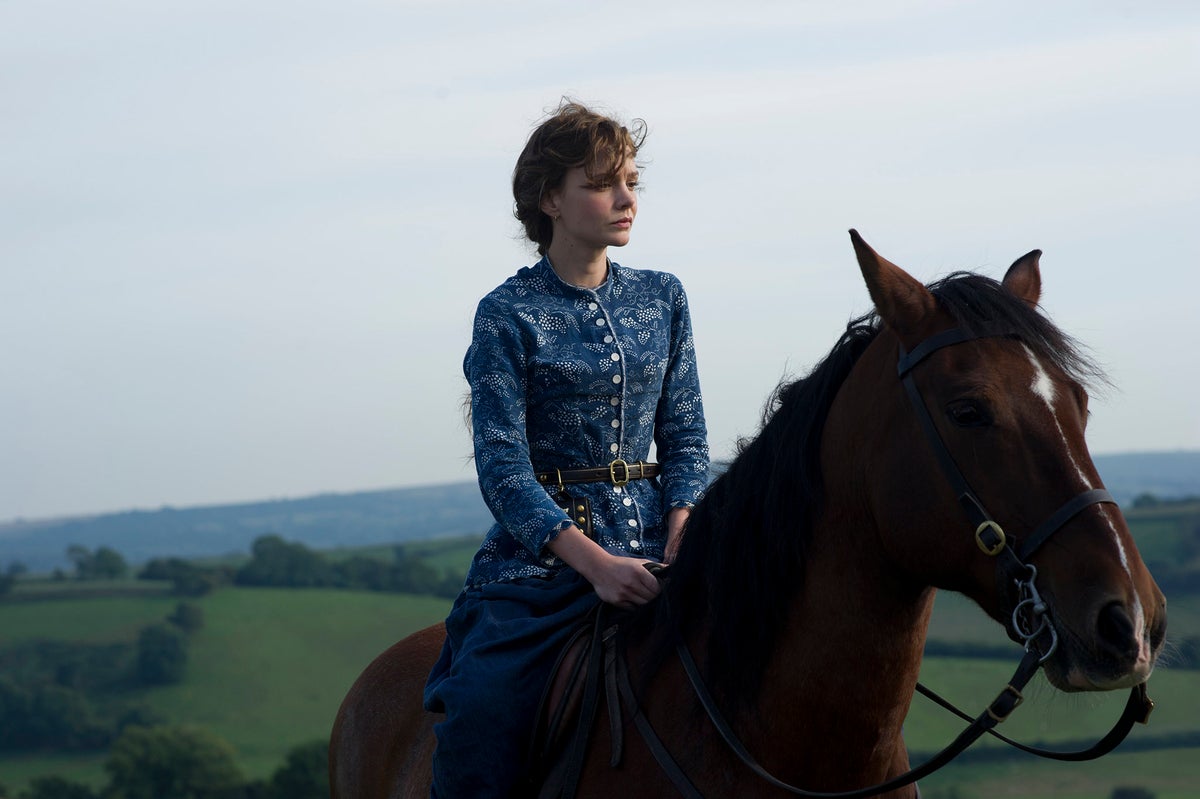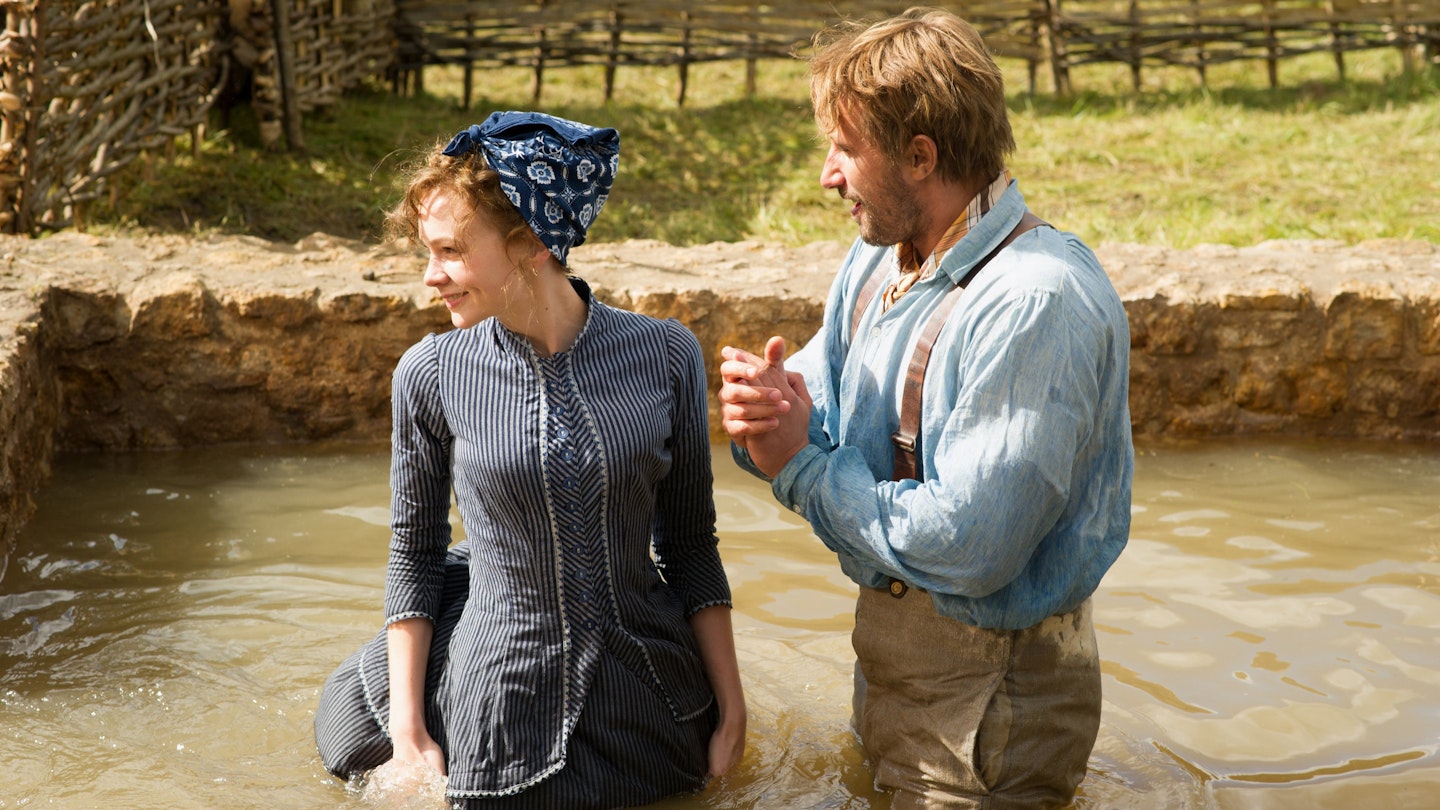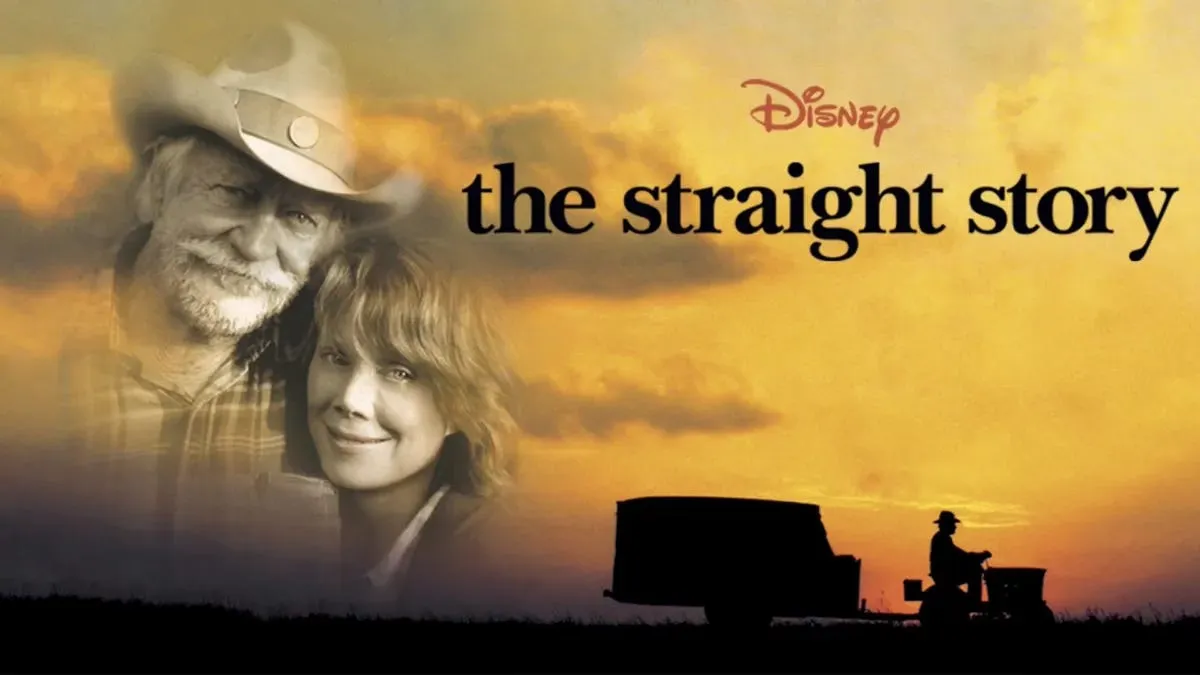In the wild hills, a woman dared to live on her own terms
Far from the Madding Crowd (2015), directed by Thomas Vinterberg, is a lush, romantic adaptation of Thomas Hardy’s classic 1874 novel. Set against the sweeping English countryside, the film tells the story of Bathsheba Everdene, a fiercely independent woman navigating love, ambition, and personal freedom in a society where those qualities are rarely welcomed in women.
Carey Mulligan delivers a quiet yet potent performance as Bathsheba, a headstrong farm owner who defies the expectations of the time. She inherits a large estate and runs it with skill, determination, and unshakable pride. But it’s not just the land that demands her attention—three vastly different suitors circle her life: Gabriel Oak (Matthias Schoenaerts), a humble, loyal shepherd; William Boldwood (Michael Sheen), a wealthy, older bachelor driven by emotional restraint; and Sergeant Frank Troy (Tom Sturridge), a seductive soldier whose impulsive passion both dazzles and wounds.

The film shines in its naturalistic tone. Rolling hills, golden fields, and the raw beauty of the countryside become a character in themselves—echoing Bathsheba’s own untamed spirit. Vinterberg allows the narrative to breathe, never rushing the emotional arcs. Hardy’s story, with its deep roots in nature and fate, unfolds slowly and meaningfully, punctuated by moments of emotional intensity and introspection.
Carey Mulligan brings depth and modern sensibility to Bathsheba, portraying her not as flawless, but as deeply human. Her choices—sometimes bold, sometimes naïve—reflect a woman learning to live with both freedom and consequence. Schoenaerts, meanwhile, grounds Gabriel in quiet strength and steadfast love, a calm in the storm of Bathsheba’s turbulent decisions.
What sets Far from the Madding Crowd apart is its refusal to oversimplify love. It explores not just romance, but the nuances of timing, pride, regret, and redemption. The love triangle becomes less about who Bathsheba will choose, and more about who she will become in the process. It’s a story of growth as much as it is of love—a tale of a woman coming to terms with her power, vulnerability, and desires.

In the end, this adaptation doesn’t just recreate a literary classic—it reclaims it for modern audiences, reminding us that the struggle for selfhood in the face of tradition is as relevant now as it was in Victorian England.

-1753841651-q80.webp)

